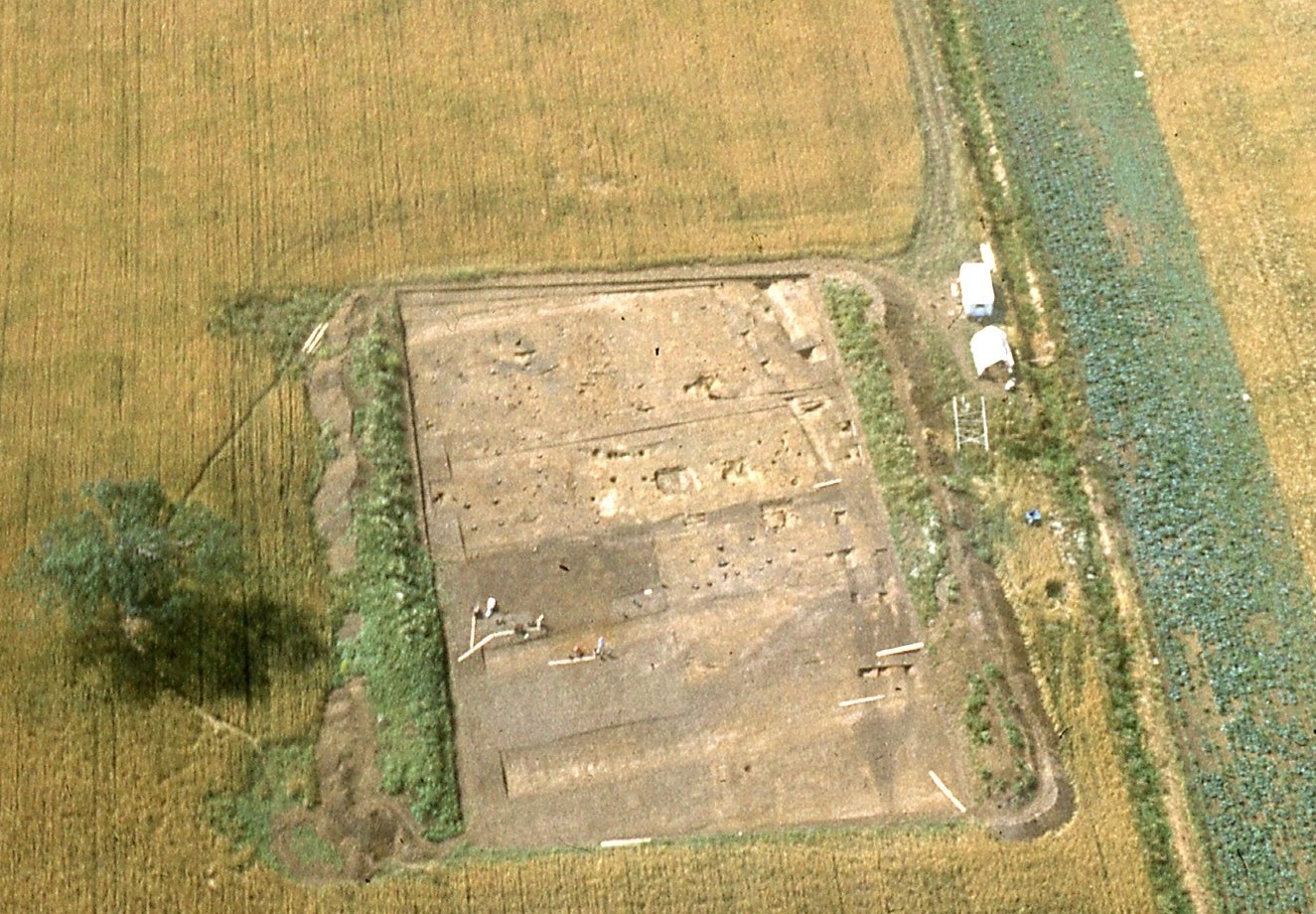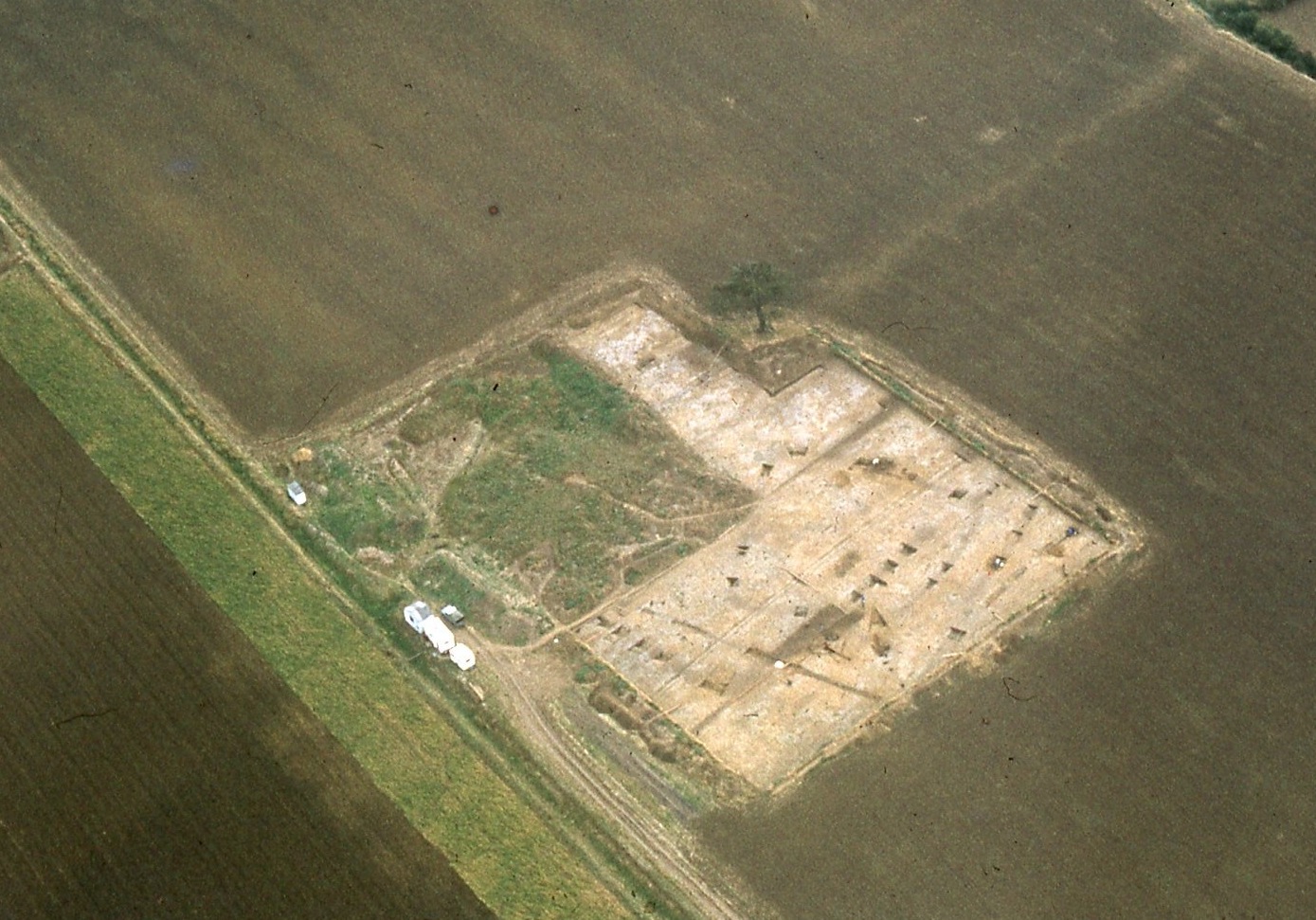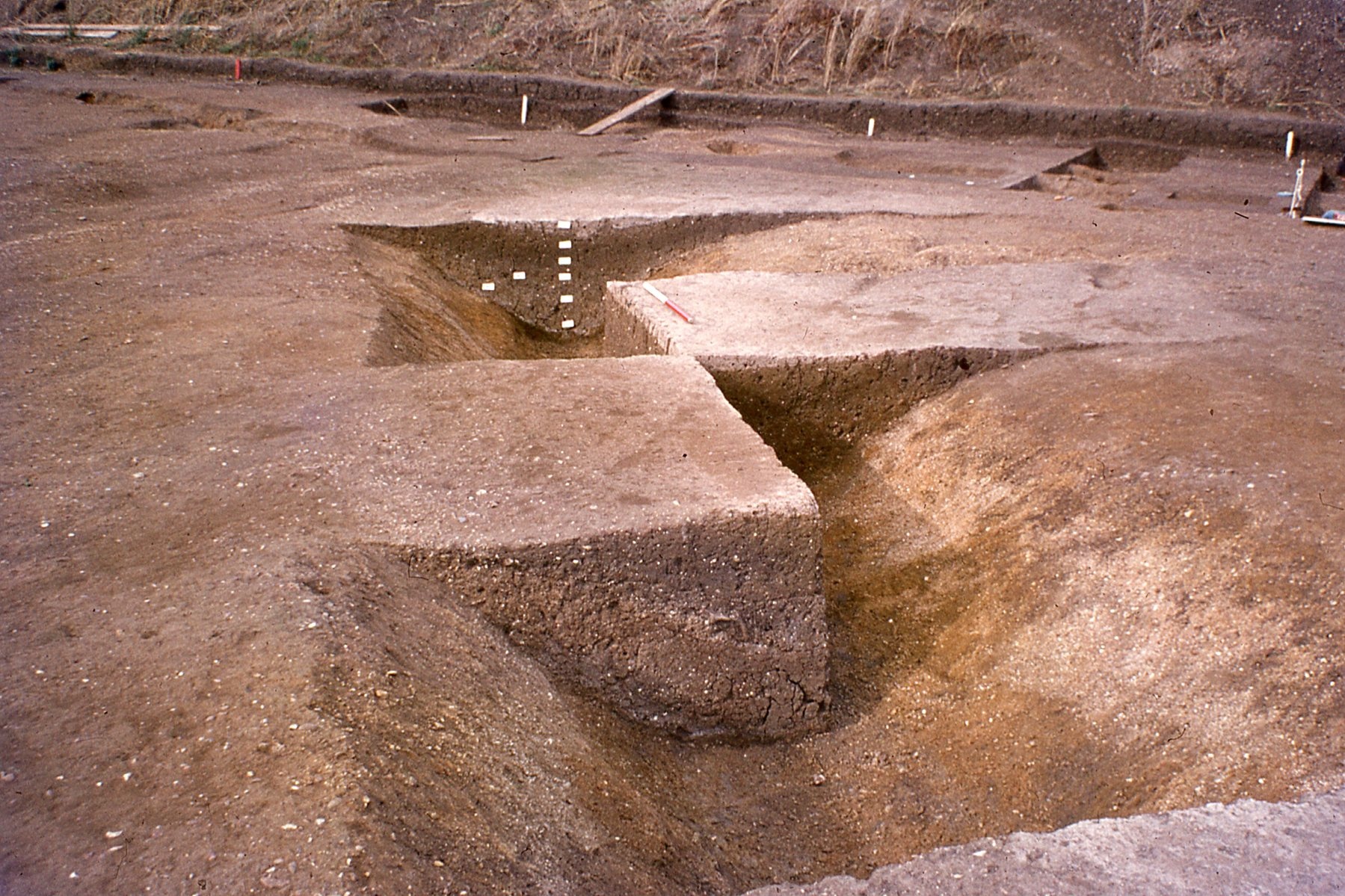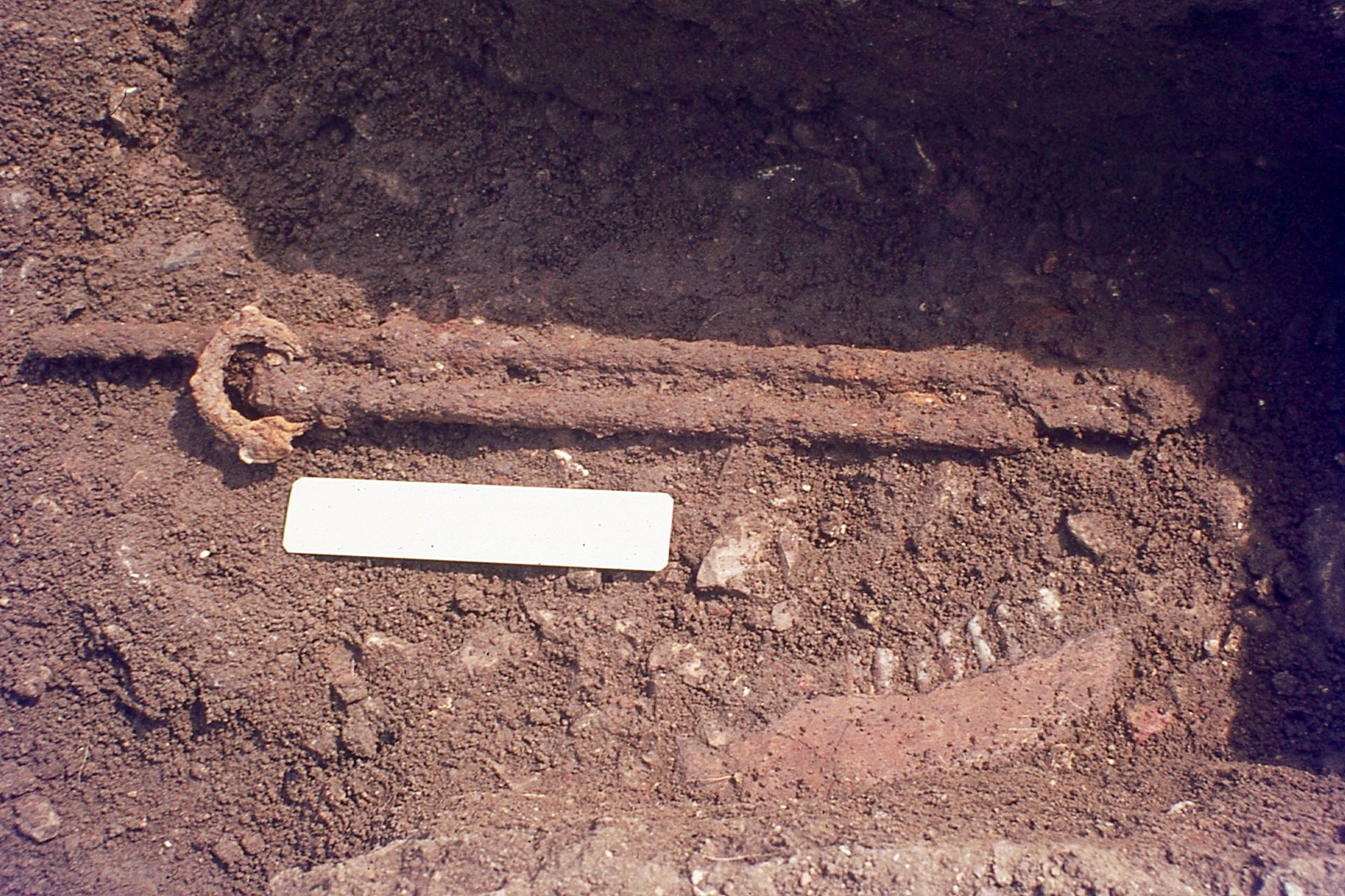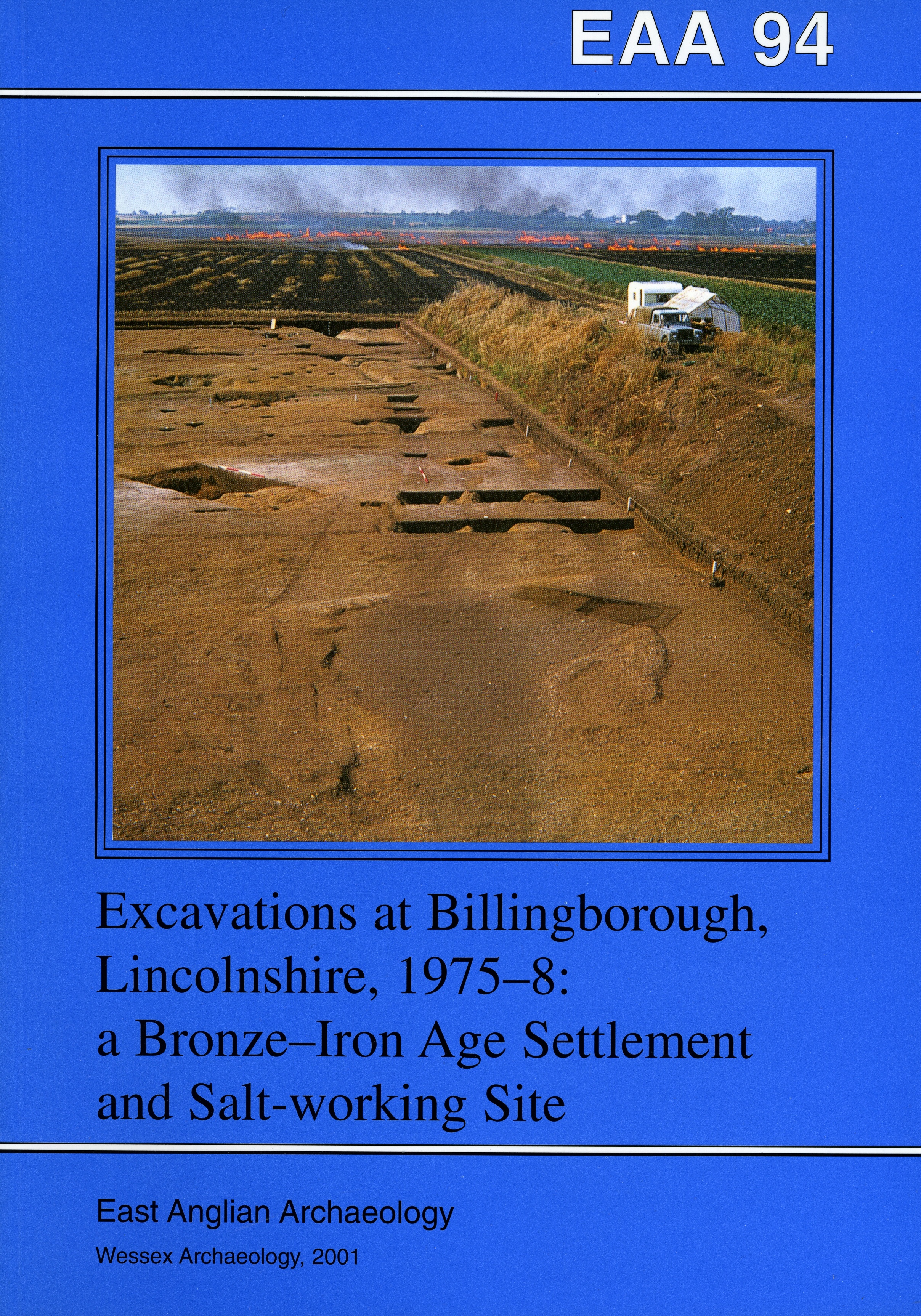 Extensive excavations of an area of c. 5500 m2 took place on the fen margin at Billingborough, Lincolnshire between 1975 and 1978. This revealed a sequence of occupation spanning approximately 1500 years.
Extensive excavations of an area of c. 5500 m2 took place on the fen margin at Billingborough, Lincolnshire between 1975 and 1978. This revealed a sequence of occupation spanning approximately 1500 years.
There is slight evidence for Late Neolithic/Early Bronze Age activity but the earliest substantial remains were those of an enclosure dating to the second half of the 2nd millennium BC; a number of four-post structures and other features may also relate to this enclosure.
Following a period (or periods) of freshwater flooding and marine transgression, salt production was undertaken on the site during the mid 1st millennium BC. Occupation intensified during the last centuries of the 1st millennium BC, with the construction of two enclosures associated with settlement. In the 1st century AD the enclosures were superseded by a field system. In all phases artefacts, particularly pottery, were well-preserved and found in considerable quantities.
The site at Billingborough is of considerable regional importance. The principal reasons for this are:
- the Middle Bronze Age enclosure remains the most extensively and completely excavated enclosure of its type in the area
- the Late Bronze Age/Early Iron Age salt-making debris remains one of the earliest and most substantial assemblages of such material in the area
- the site provides a pottery sequence for the Bronze Age and Iron Age periods in the region. The sequence has been extensively used by the Fenland Survey Project, and it is of considerable importance to prehistoric studies in the East Midlands.
